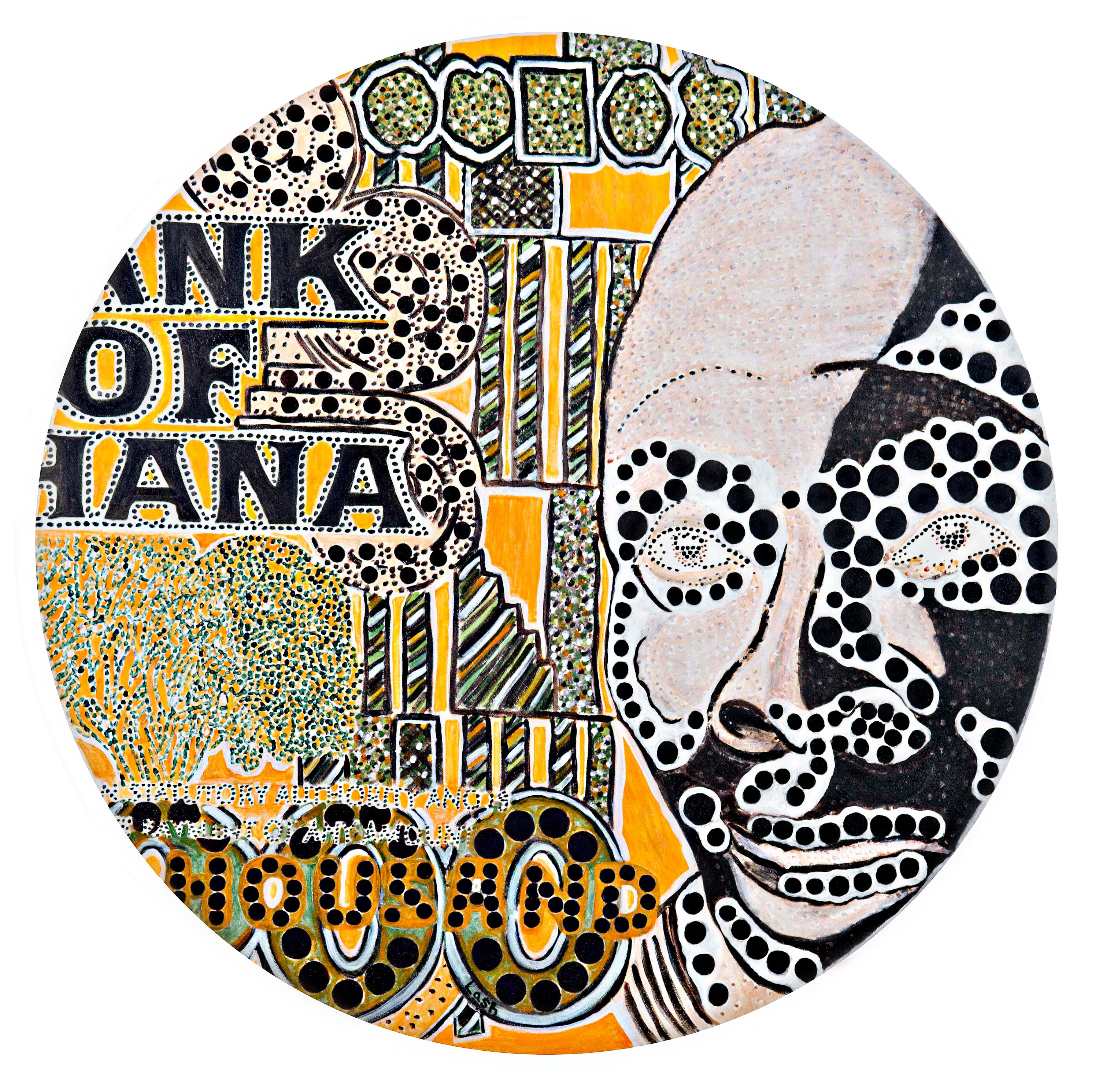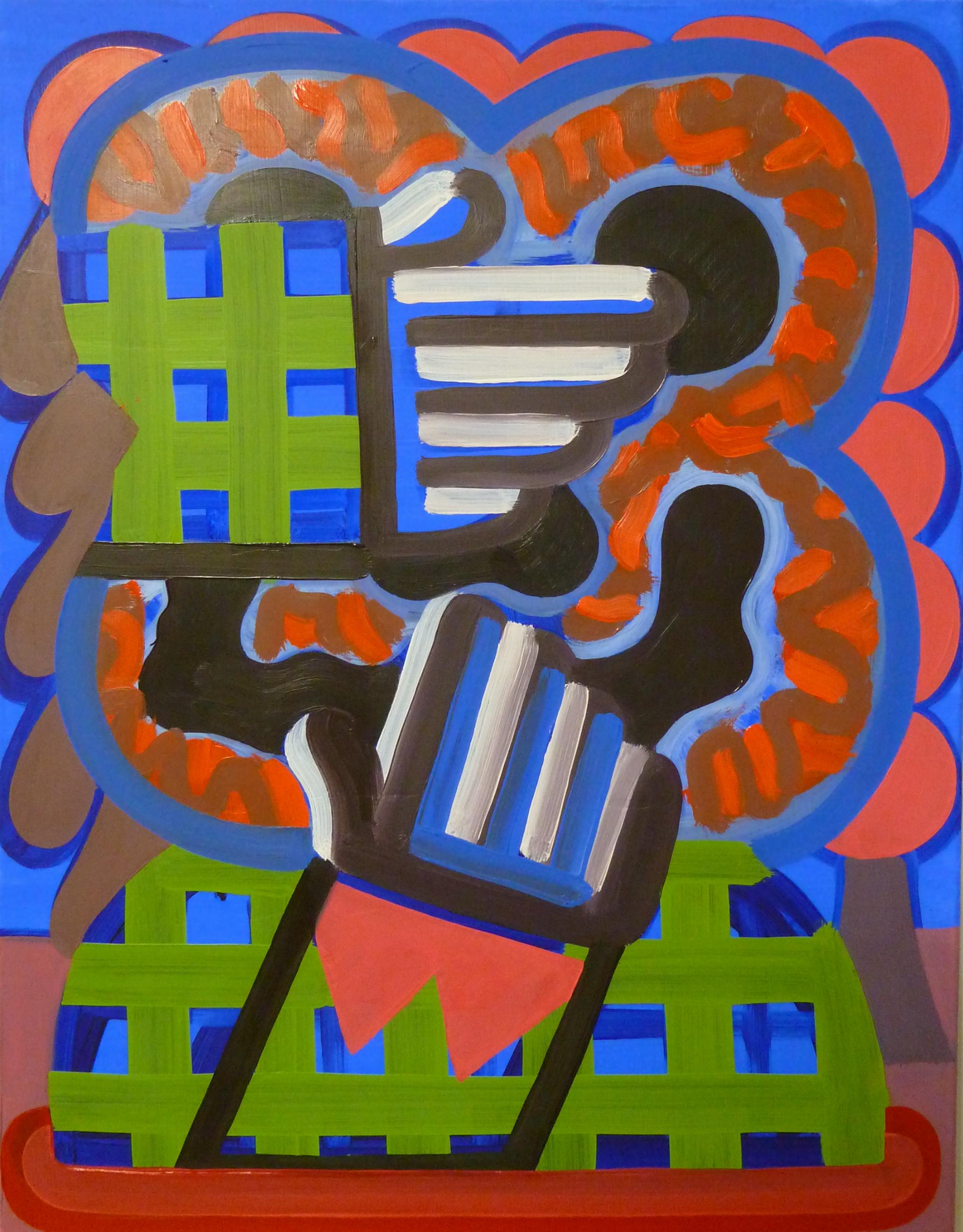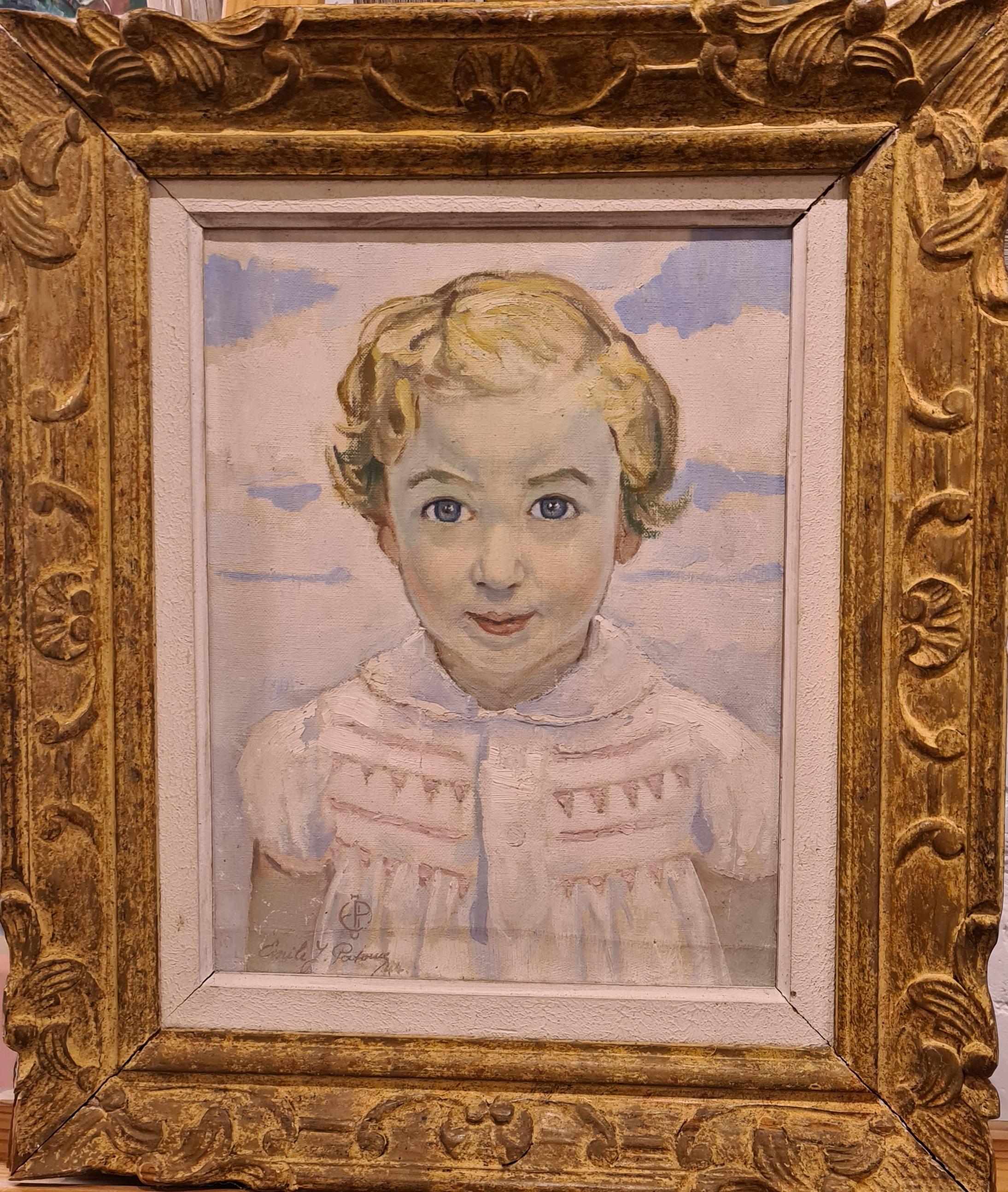Items Similar to The Papakha, A Pre Revolutionary Nobleman From the Caucasus.
Video Loading
Want more images or videos?
Request additional images or videos from the seller
1 of 19
Théophile BérengierThe Papakha, A Pre Revolutionary Nobleman From the Caucasus.1892
1892
About the Item
A large French oil on canvas portrait of a dignitary from the Caucasus by Théophile Paul Marie Bérengier. The painting is signed and dated bottom right and is presented in a fine gilded wood and plaster frame.
A magnificent late nineteenth century portrait of a fine nobleman or dignitary in a beautiful silk costume and papakha wool hat. Bérengier has caught the character of the sitter, his deep brown eyes, whiskers and ruddy complexion a contrast against the fineness of his outfit. The subject's half wry smile inviting us to start a conversation and share a moment with him. A very strong yet charming and characterful composition beautifully executed. Berengier probably painted this portrait after his return from Paris to the port of Marseille, a centre of international trade he would no doubt have encountered characters from the four corners of the world here as subjects for his portraits.
Théophile Paul Marie BÉRENGIER was born in 1851 in Marseille and died there in 1928. He was a painter of portraits and landscapes in the Post Impressionist style. He exhibited at the 'Salon du Blanc et Noir' in 1886. After having worked in Paris, he returned to Marseille. He retained a taste for precision, especially in the art of portraiture. Later, around 1890, when he painted landscapes, his touch was vigorous, his colours vibrant. The works of this period are meticulously prepared supporting a vigorous light from the glazes. This portrait is from this period and incorporates the best of his talent and experience as a painter.
On his return he also produced the ceiling of the Café de l'Univers in Marseille.
His works are held in various private collections and museums including the Musee d'Orsay.
The papakha; Armenian: p‘ap‘akh, Azerbaijani: papaq, Chechen: holhazan-kuy; Georgian: papakhi, Russian: папа́ха, papakha) is a wool hat worn by men throughout the Caucasus and also in uniformed regiments in the region and beyond. The word papakha is of Turkic origin.
There are two different Caucasian papakhas. One, called a papaha, is a high fur hat, usually made of karakul sheepskin. The hat has the general appearance of a cylinder with one open end and is set upon the head in such a way as to have the brim touch the temples. Some examples have ear-flaps which can be folded up when not in use. The other style is called a kubanka, and is similar to the papaha, but shorter and without ear-flaps.
Papaqs are very important to mountain peoples of the Caucasus, where a man's hat is considered a very important part of his identity. Papakhi are donned by the Circassians, Chechens, Dagestanis, Ingush and other Caucasian tribes. Papakhas are also donned in Georgia mostly worn in mountainous regions of Pshavi, Khevi, Mtiuleti, and Tusheti. In 1855, after the campaigns in the Caucasus Mountains, the Papakha was introduced in the Russian army as an official part of the uniform for the Cossacks, and later for the rest of the cavalry. Papaq is also very common in Azerbaijan, Armenia, Turkmenistan, Uzbekistan, as well as among the Uyghurs.
The Caucasus is a region between the Black Sea and the Caspian Sea, mainly comprising Armenia, Azerbaijan, Georgia, and parts of Southern Russia. The Caucasus Mountains, including the Greater Caucasus range, have historically been considered as a natural barrier between Eastern Europe and Western Asia.
Mount Elbrus in Russia, Europe's highest mountain, is situated in the Western Caucasus. On the southern side, the Lesser Caucasus includes the Javakheti Plateau and the Armenian highlands, part of which is in Turkey.
The Caucasus is divided into the North Caucasus and South Caucasus, although the Western Caucasus also exists as a distinct geographic space within the North Caucasus. The Greater Caucasus mountain range in the north is mostly shared by Russia and Georgia as well as the northernmost parts of Azerbaijan. The Lesser Caucasus mountain range in the south is occupied by several independent states, mostly by Armenia, Azerbaijan, and Georgia, but also extending to parts of northeastern Turkey, northern Iran and the self-proclaimed Republic of Artsakh.
- Creator:Théophile Bérengier (1851 - 1928, French)
- Creation Year:1892
- Dimensions:Height: 28.35 in (72 cm)Width: 24.02 in (61 cm)Depth: 1.38 in (3.5 cm)
- Medium:
- Movement & Style:
- Period:
- Condition:
- Gallery Location:Cotignac, FR
- Reference Number:
About the Seller
5.0
Platinum Seller
These expertly vetted sellers are 1stDibs' most experienced sellers and are rated highest by our customers.
Established in 2000
1stDibs seller since 2020
157 sales on 1stDibs
Typical response time: 1 hour
- ShippingRetrieving quote...Ships From: Cotignac, France
- Return PolicyA return for this item may be initiated within 3 days of delivery.
More From This SellerView All
- Alice, Post Impressionist Portrait of a Young Girl.By Emile Jean PatouxLocated in Cotignac, FRMid century oil on canvas portrait of a young girl in period dress, in fine gilt frame. Signed in full, dated 1944 and with artist's monogram. Emile Patoux (Belgian 1893-1985) studi...Category
Mid-20th Century Post-Impressionist Portrait Paintings
MaterialsOil, Canvas
- 1930s Oil on Canvas Portrait of the Artist's SonLocated in Cotignac, FR1930s Oil on canvas portrait by S Cousin. The painting is signed bottom right and the subject 'Henri Cousin' titled on the back of the canvas. An engaging and charming oil portrait ...Category
Mid-20th Century Post-Impressionist Portrait Paintings
MaterialsOil, Canvas
- Woman Seated in a Klismos Chair. Italian School, Transavantgarde Oil on Canvas.Located in Cotignac, FRMid 20th Century Italian portrait of a seated lady signed Battionni bottom left. Presented in a white and gilt wood frame. A characterful stylised...Category
Mid-20th Century Italian School Figurative Paintings
MaterialsCanvas, Oil
- 'Him', A Large Glasgow School Oil Painting Portrait on CanvasLocated in Cotignac, FRA large Glasgow School oil on canvas portrait by Scottish artist Stuart Mackenzie. The painting is presented in a plain baton wood frame. Though not ...Category
Late 20th Century Post-Modern Figurative Paintings
MaterialsCanvas, Oil
- 'Her', A Large Glasgow School Oil Painting Portrait On CanvasLocated in Cotignac, FRA large Glasgow School oil on canvas portrait by Scottish artist Stuart Mackenzie. The painting is presented in a plain baton wood frame. Though not ...Category
Late 20th Century Post-Modern Figurative Paintings
MaterialsCanvas, Oil
- 'Him' and 'Her', A Pair of Large Glasgow School Portrait Paintings on CanvasLocated in Cotignac, FRA pair of large Glasgow School oil on canvas portraits by Scottish artist Stuart Mackenzie. The works are presented in plain baton wood frames. Thoug...Category
Late 20th Century Post-Modern Figurative Paintings
MaterialsCanvas, Oil
You May Also Like
- Mask, bold graphic colorful pointillist patterns text global currencyLocated in Brooklyn, NYGhanaian 20000 Cedi Note, Oil On Canvas, 48" Round Jenna Lash specializes in global currency featuring animals, portraiture in a neo pointillist styleCategory
2010s Pointillist Figurative Paintings
MaterialsCanvas, Oil
- No Foe Shall Gather Our Harvest bright pointillist patterns text global currencyLocated in Brooklyn, NYNo Foe Shall Gather Our Harvest Australian 10 Dollar Note, Acrylic On Canvas, 60" x 48" Jenna Lash specializes in global currency featuring animals, portra...Category
2010s Pointillist Figurative Paintings
MaterialsCanvas, Oil
- "Touching", oil paint, portrait, hands, face, intimacy, vector, human, senseLocated in Toronto, Ontario"Touching" is a remarkable oil painting on canvas measuring 18" tall by 14" wide. For all it's modest size, it throws several punches above its weight. The title Touching could be a ...Category
21st Century and Contemporary Fauvist Portrait Paintings
MaterialsCanvas, Oil
- The Japanese, 1970. Oil on canvas, 100x70 cmBy Jadviga ZjilvinskaLocated in Riga, LVJadviga Žilvinska (1918-2010) was born in Tallinn. She grew up in Liepāja, where her great interest in art began and strengthened, which led the young artist to study at the Art Aca...Category
20th Century Fauvist Portrait Paintings
MaterialsCanvas, Oil
- Farming Family on a Sunday Morning, Oil on Canvas. Framed and SignedLocated in brussel, BEThe Namur painter and engraver, Louis Decoeur (1884-1960) became a member of “L’Effort” around 1910. This artist’s association provided a free studio for painters in Brussels, on the...Category
20th Century Fauvist Figurative Paintings
MaterialsCanvas, Oil
- RabbisBy Mane KatzLocated in Larchmont, NYMANE-KATZ RABBIS, c. 1935 Oil on canvas 18 H. x 14 W. 1/2 in. (45.5 x 35.8 cm.) Signed PROVENANCE Dominion Gallery, Montreal Christies, New York, November 04, 1982. Lot 177: $11,000 Private Collection, New Jersey, 1982-2021 Estate of the above, 2021. Raised in an orthodox Jewish family in Russia, Mane-Katz was born in the Ukraine and became an early 20th-century artist, known especially for portraits and paintings with Jewish themes. From childhood, he had been influenced by stories of Jewish mysticism, which was reflected in his paintings. He had a peripatetic life between Russia, France, Israel, and America. He first studied art in Kiev at the Beaux Arts Academy, and in 1913, went to Paris where he associated with Chaim Soutine and Marc Chagall and continued his art studies there at the Beaux Arts Academy. During World War I, he tried to join the Foreign Legion but was rejected because he was too short. He went back in Russia again, this time joining the Soviet Revolution but rejected the cause because he was so horrified by Josef Stalin. He worked briefly for the Russian ballets, and in 1921, he returned to Paris where in 1927 he took French citizenship. For the next twelve years, he traveled widely, showing his art work and doing many paintings. In 1939, as World War II was breaking out, he was drafted by the French and then was taken prisoner by the Germans. He escaped and went to the United States and remained there until 1945, exhibiting his paintings at Katia Granoff Gallery and Wildenstein Gallery. After the war, he returned to Paris where he had exhibited in the Salons. In Paris to the end of his career, he worked happily, painting hundreds of portraits of rabbis...Category
Early 20th Century Fauvist Figurative Paintings
MaterialsCanvas, Oil




